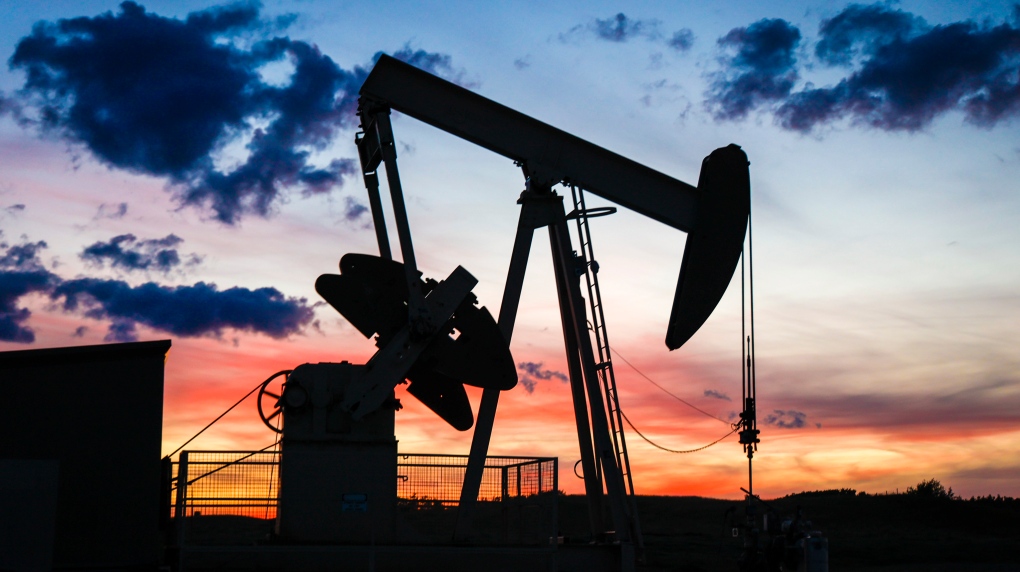
Prince William and Kate release photo of daughter Charlotte to mark ninth birthday
Prince William and his wife Kate released a picture of their daughter Charlotte to mark the princess's ninth birthday on Thursday.
New data from the Canadian Climate Institute shows that emissions from the oil and gas industry and buildings continued to climb in the previous year, undercutting Canada's overall emissions reduction progress.
The independent estimate published on Thursday by 440 Megatonnes, a project of the Canadian Climate Institute, revealed that in 2022, Canada's total emissions increased by 2.1 per cent (14.2 megatonnes) compared to the previous year.
Additionally, emissions went up in specific sectors by a total of 37.1 megatonnes, resulting in a net increase of 14.2 megatonnes in emissions.
According to the report, despite the slight increase observed in 2022, Canada's overall emissions were still 6.3 per cent below 2005 levels which appears significantly below the country's 2030 target of reducing emissions by 40 to 45 per cent below 2005 levels.
The report also found that emissions from the oil and gas industry and buildings caused 72 per cent of the total increase in 2022. This trend aligns with the longer-term pattern of consistently rising emissions from both sectors.
The increase in emissions from buildings was primarily due to increased heating from a colder winter, according to the report.
In contrast to other sectors, such as electricity, where emissions have witnessed a 56 per cent decrease, carbon emissions from the oil and gas industry and buildings have been on the rise since 2005.
“Our Early Estimate of Canada’s 2022 emissions shows that climate policy and clean technology are cutting emissions —but that progress is being swamped by the continued rise in emissions from oil and gas and buildings” Canadian Climate Institute president Rick Smith explained in a press release.
The institute says swift action is needed at both the federal and provincial levels. This includes the finalization and enforcement of upcoming emissions caps for the oil and gas sector, the establishment of methane regulations, as well as the implementation of the Clean Electricity Regulations and the Green Building Strategy, among other measures.
“Acting quickly to cap emissions from oil and gas, reducing methane leaks, and expanding clean electricity will accelerate our progress while building a more prosperous and competitive,” Smith said.
Reporting for this story was paid for through The Afghan Journalists in Residence Project funded by Meta.

Prince William and his wife Kate released a picture of their daughter Charlotte to mark the princess's ninth birthday on Thursday.
The trusted traveller program between Canada and the United States is extremely popular and almost two million Canadians have a Nexus card.
Scientists studying a Neanderthal woman's remains have painstakingly pieced together her skull from 200 bone fragments to understand what she may have looked like.
Inspections are underway at more than one Loblaws location in Ottawa after complaints were filed about tall Plexiglas barriers.
The makers of Ozempic say their weight-loss drug Wegovy will be available to patients in Canada starting Monday.
Archeologists have unearthed the skeletons of five people, missing their hands and feet, at a former Nazi military base in Poland.
A Canadian restaurant lowered its prices this week, and though news of price tags dropping rather than climbing sounds unusual, the business strategy in this case is not, according to experts in the field.
In an effort to balance the profitability of Mother's Day with the pain it causes some people, some brands are offering customers the choice to opt out of Mother's Day email advertising.
Just days before the seventh anniversary of the day Jack Letts was thrown in prison with thousands of suspected ISIS fighters, his mother, Sally Lane, delivered a small stack of envelopes to the headquarters of Global Affairs Canada in Ottawa.

A group of SaskPower workers recently received special recognition at the legislature – for their efforts in repairing one of Saskatchewan's largest power plants after it was knocked offline for months following a serious flood last summer.
A police officer on Montreal's South Shore anonymously donated a kidney that wound up drastically changing the life of a schoolteacher living on dialysis.
Since 1932, Montreal's Henri Henri has been filled to the brim with every possible kind of hat, from newsboy caps to feathered fedoras.
Police in Oak Bay, B.C., had to close a stretch of road Sunday to help an elephant seal named Emerson get safely back into the water.
Out of more than 9,000 entries from over 2,000 breweries in 50 countries, a handful of B.C. brews landed on the podium at the World Beer Cup this week.
Raneem, 10, lives with a neurological condition and liver disease and needs Cholbam, a medication, for a longer and healthier life.
The lawyer for a residential school survivor leading a proposed class-action defamation lawsuit against the Catholic Church over residential schools says the court action is a last resort.
Mounties in Nanaimo, B.C., say two late-night revellers are lucky their allegedly drunken antics weren't reported to police after security cameras captured the men trying to steal a heavy sign from a downtown business.
A property tax bill is perplexing a small townhouse community in Fergus, Ont.
 In contrast to other sectors, such as electricity, where emissions have witnessed a 56 per cent decrease, carbon emissions from the oil and gas industry and buildings have been on the rise since 2005. THE CANADIAN PRESS/Jeff McIntosh
In contrast to other sectors, such as electricity, where emissions have witnessed a 56 per cent decrease, carbon emissions from the oil and gas industry and buildings have been on the rise since 2005. THE CANADIAN PRESS/Jeff McIntosh